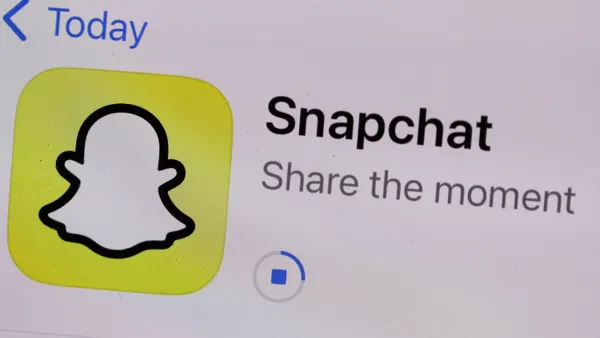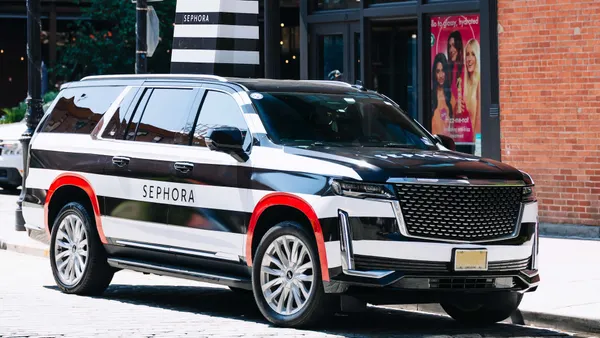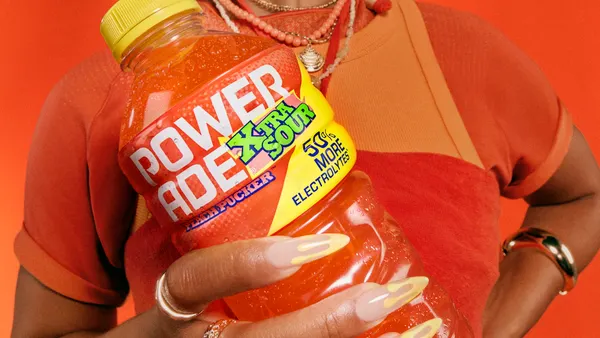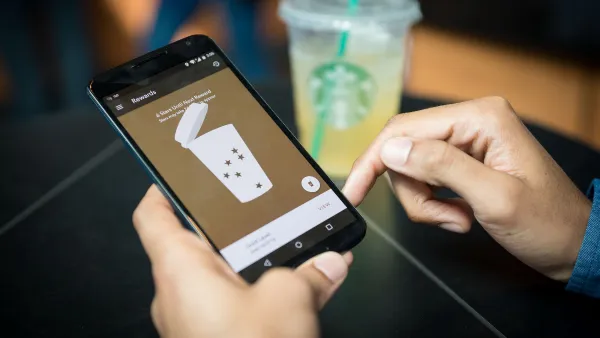Brief:
- Augmented and virtual reality (AR/VR) and subscription services currently generate more enthusiasm among U.S. shoppers than smart speakers, per a survey by researcher GfK. Just 8% of consumers have shopped with a smart speaker and plan to do it again, while 36% have never used the voice-powered devices for purchases and don't plan to. Another 8% have tried voice shopping, but won't do it again, the survey found.
- AR technology, which combines digital images with a smartphone's camera views, has been used by even fewer shoppers (5%). However, 25% of surveyed consumers said they'll likely use the technology for shopping in the next year, compared with 23% for smart speakers and 21% for subscription services like Stitch Fix or Birchbox.
- Subscription services have the highest awareness among consumers, with 79% of respondents saying they're familiar with the shopping method, compared to 74% for smart speakers and 68% for AR/VR. Fourteen percent of U.S. consumers have tried shopping from a subscription service and plan to do so again, per GfK.
Insight:
While the adoption rate of smart speaker shopping is currently low, the future may be getting brighter with nearly a quarter of respondents saying they'll likely use voice tech for purchases in the next year, as GfK found. About 26% of U.S. adults, or 66.4 million people, currently own a smart speaker, according to a separate study by Voicebot.ai and Voicify. This highlights the potential pool of consumers who are familiar with the tech and may be willing to experiment with new uses, potentially driving growth in shopping by smart speaker as more people buy the voice-powered devices.
Researcher eMarketer recently forecast that the number of U.S. consumers who shop by smart speaker will rise 31.6% to 31 million this year, and by another 11.8% to 34.7 million in 2020.
The current low adoption rate of smart speaker shopping also indicates that the technology has significant room for improvement, GfK's study suggests. Most retailers have yet to develop killer voice-powered apps that help people sift through products — especially physical goods — and buy them sight-unseen beyond replenishing basic items.
"As speakers become ever more central to how we run our households and our lives, it seems inevitable that better interfaces and infrastructures will emerge — but we are certainly closer to the start of that journey than the finish," Joe Beier, GfK's EVP of consumer insights, said in the study announcement.
GfK's finding supports other research that indicates smart speakers are better suited for buying digital media products than physical goods. While voice commerce is set to grow to over $80 billion a year by 2023, it's projected to mostly consist of money transfers and digital media such as on-demand movies, music and TV shows, Juniper Research says. More than half (57%) of consumers said they would use voice technology to pay for low-priced goods and services, per a study by payments provider Paysafe.
Meanwhile, AR's ready availability on millions of smartphones has helped boost its adoption among consumers, retailers and brands, as compared with VR, which requires special — often pricey — equipment. Home-decorating retailer Ikea, for example, this year began testing an app that merges mobile AR features to drive direct purchases. The company was an early adopter of AR technology that let customers use their smartphones to virtually decorate their space with furniture before making a purchase. Cosmetics giants like L'Oréal and luxury brands like Gucci also have added AR demonstrations of products to their apps. The rollout of high-speed 5G mobile service is predicted to drive growth of AR shopping to 100 million consumers by next year, researcher Gartner estimates.











